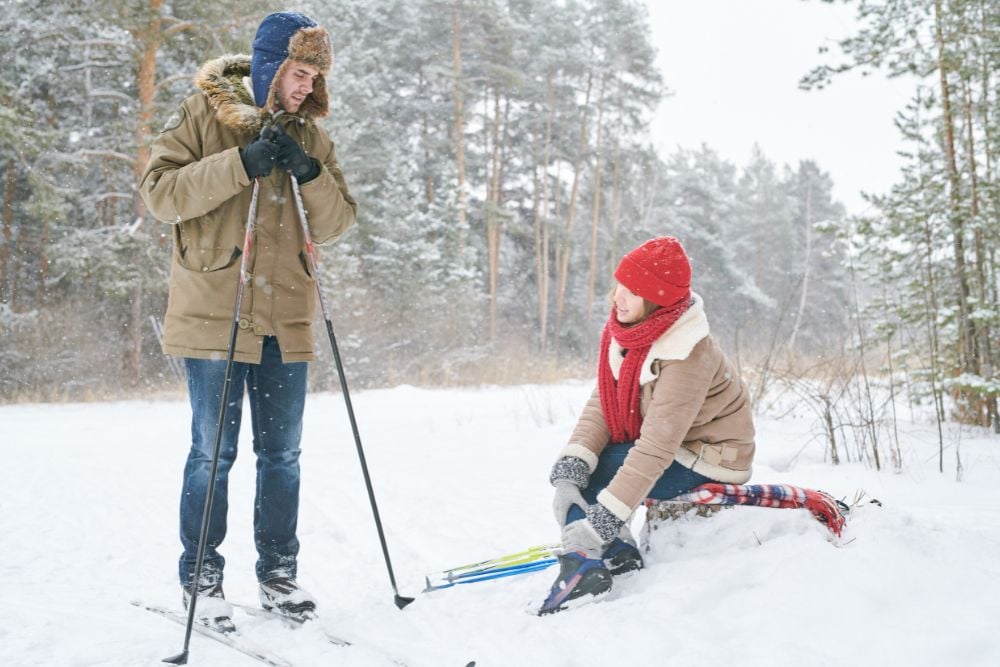Winter Sports Safety: How to Prevent and Treat Common Injuries This Season
January 30th, 2025Orthopedic CareOrthoHC
Winter is a season full of adventure and excitement, with many people flocking to snowy mountains and ice rinks to enjoy skiing, snowboarding, and ice skating. However, while these activities are thrilling, they also come with risks. Understanding how to prevent injuries and what to do if they occur can help ensure a safe and enjoyable winter sports season.
Common Winter Sport Injuries
Winter sports can place significant stress on the body, leading to various injuries. Some of the most common include:
- Knee Injuries: Knees play a crucial role in absorbing shock during all types of physical activity, even something as simple as walking. Sports such as skiing and snowboarding are known to put increased pressure on the knees due to sharp turns, sudden stops, and twisting motions. These motions can cause anterior cruciate ligament (ACL) tears, one of winter sports' most common injuries. Awkward falls or positioning can also cause injuries such as a torn ligament, fractured kneecap, or knee dislocation.
- Fractures/Sprains: Wrist fractures and ankle sprains are among the most common injuries in winter sports, often caused by awkward falls. When falling, it’s natural to instinctively extend your hands to break the impact. Unfortunately, this can result in wrist fractures or sprains, depending on the force of the fall. During a fall, especially while snowboarding or skiing, ligaments in the ankle can become overstretched or even torn, resulting in a sprain or more severe injury.
- Dislocated Shoulder: Attempting to catch yourself in a fall can also result in the overextension of the arm which can result in a dislocated shoulder. Common symptoms include bruising, redness, swelling, and restricted movement. In some cases, you may also experience numbness or tingling in the hand and fingers.
Tips for Injuring Prevention
Prevention is the key to enjoying winter sports safely. Here are some tips to minimize your risk of injury:
- Use Proper Gear: Wear a helmet to protect against head injuries. Ensure your boots fit well and provide adequate ankle support. Use wrist guards if you’re snowboarding to reduce the risk of fractures
- Warm-Up and Stretch: Cold muscles are more prone to injury. Take time to warm up with light cardio and stretches.
- Learn Proper Techniques: Take lessons to master the basics of skiing, snowboarding, or skating. Proper technique reduces unnecessary strain on joints and muscles.
- Don’t Push Yourself: Fatigue can increase the risk of injury, so honor your body and take breaks when you feel tired. Avoid overestimating your abilities and taking on challenges you might not be ready for.
- Stay Hydrated: Remember to stay well hydrated. Drinking plenty of water helps maintain proper muscle function and keeps your joints lubricated, reducing the risk of strains, tears, and other injuries.
Treating Common Winter Sport Injuries
Despite best efforts, injuries can happen. Knowing how to address them promptly can aid recovery and prevent complications. For immediate first aid, follow the R.I.C.E. method (Rest, Ice, Compression, Elevation) for sprains and strains to reduce swelling and pain. Immobilize the affected area if a fracture or dislocation is suspected, and seek medical attention immediately. Consult an orthopedic specialist to determine the best course of treatment. This may include physical therapy or, in some cases, surgery.
Staying Safe and Active
Winter sports offer an excellent way to stay active and enjoy the outdoors during the colder months. By taking precautions and knowing how to handle injuries, you can make the most of the season while protecting your health.
If you experience a winter sports injury, the experts at The Orthopedic Health Center are here to help. Our team specializes in diagnosing and treating a wide range of orthopedic conditions to get you back on your feet – and back on the slopes – as quickly and safely as possible. Schedule an appointment today and let us help you stay active this winter!
Appointments available now.
